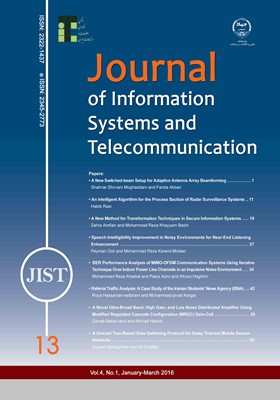Speech Intelligibility Improvement in Noisy Environments for Near-End Listening Enhancement
محورهای موضوعی : Signal ProcessingPeyman Goli 1 , Mohammad Reza Karami-Mollaei 2
1 - Babol Noshirvani University of Technology
2 - Babol University of Technology
کلید واژه: Near-end Speech Enhancement , Intelligibility Improvement , Energy Correlation , Optimization Algorithms,
چکیده مقاله :
A new speech intelligibility improvement method for near-end listening enhancement in noisy environments is proposed. This method improves speech intelligibility by optimizing energy correlation of one-third octave bands of clean speech and enhanced noisy speech without power increasing. The energy correlation is determined as a cost function based on frequency band gains of the clean speech. Interior-point algorithm which is an iterative procedure for the nonlinear optimization is used to determine the optimal points of the cost function because of nonlinearity and complexity of the energy correlation function. Two objective intelligibility measures, speech intelligibility index and short-time objective intelligibility measure, are employed to evaluate the noisy enhanced speech intelligibility. Furthermore, the speech intelligibility scores are compared with unprocessed speech and a baseline method under various noisy conditions. The results show large intelligibility improvements with the proposed method over the unprocessed noisy speech.
A new speech intelligibility improvement method for near-end listening enhancement in noisy environments is proposed. This method improves speech intelligibility by optimizing energy correlation of one-third octave bands of clean speech and enhanced noisy speech without power increasing. The energy correlation is determined as a cost function based on frequency band gains of the clean speech. Interior-point algorithm which is an iterative procedure for the nonlinear optimization is used to determine the optimal points of the cost function because of nonlinearity and complexity of the energy correlation function. Two objective intelligibility measures, speech intelligibility index and short-time objective intelligibility measure, are employed to evaluate the noisy enhanced speech intelligibility. Furthermore, the speech intelligibility scores are compared with unprocessed speech and a baseline method under various noisy conditions. The results show large intelligibility improvements with the proposed method over the unprocessed noisy speech.


